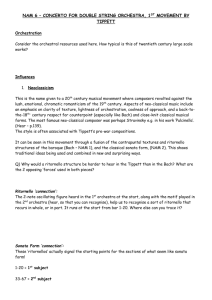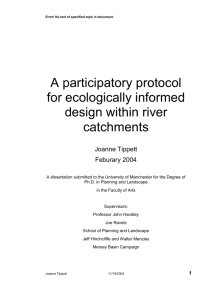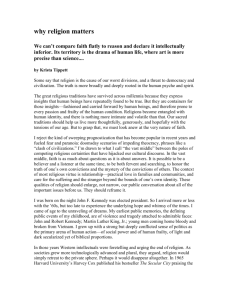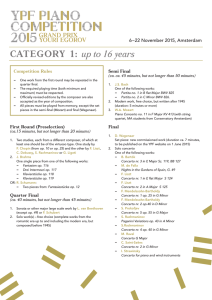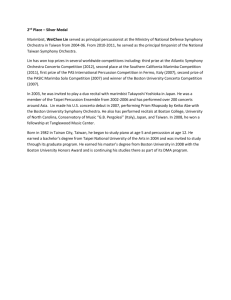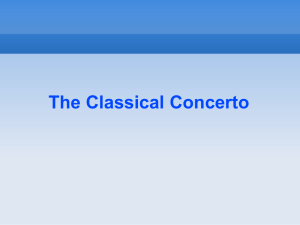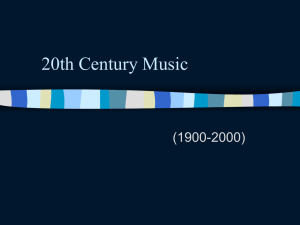During the 1930`s Tippett worked as a conductor, especially at
advertisement
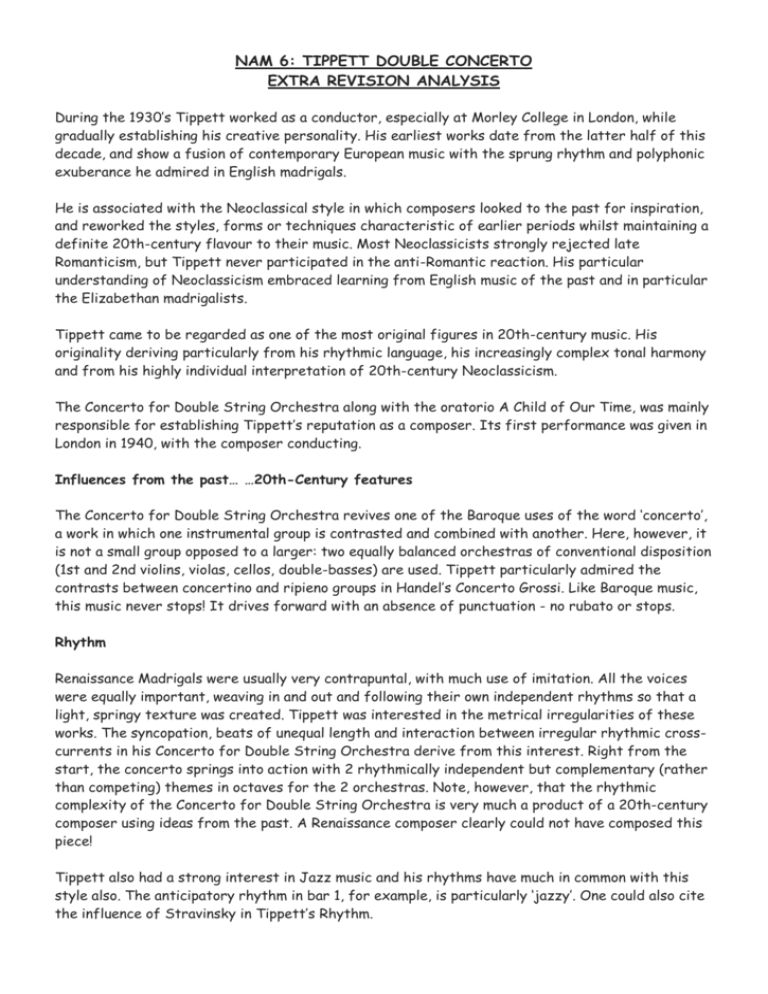
NAM 6: TIPPETT DOUBLE CONCERTO EXTRA REVISION ANALYSIS During the 1930’s Tippett worked as a conductor, especially at Morley College in London, while gradually establishing his creative personality. His earliest works date from the latter half of this decade, and show a fusion of contemporary European music with the sprung rhythm and polyphonic exuberance he admired in English madrigals. He is associated with the Neoclassical style in which composers looked to the past for inspiration, and reworked the styles, forms or techniques characteristic of earlier periods whilst maintaining a definite 20th-century flavour to their music. Most Neoclassicists strongly rejected late Romanticism, but Tippett never participated in the anti-Romantic reaction. His particular understanding of Neoclassicism embraced learning from English music of the past and in particular the Elizabethan madrigalists. Tippett came to be regarded as one of the most original figures in 20th-century music. His originality deriving particularly from his rhythmic language, his increasingly complex tonal harmony and from his highly individual interpretation of 20th-century Neoclassicism. The Concerto for Double String Orchestra along with the oratorio A Child of Our Time, was mainly responsible for establishing Tippett’s reputation as a composer. Its first performance was given in London in 1940, with the composer conducting. Influences from the past… …20th-Century features The Concerto for Double String Orchestra revives one of the Baroque uses of the word ‘concerto’, a work in which one instrumental group is contrasted and combined with another. Here, however, it is not a small group opposed to a larger: two equally balanced orchestras of conventional disposition (1st and 2nd violins, violas, cellos, double-basses) are used. Tippett particularly admired the contrasts between concertino and ripieno groups in Handel’s Concerto Grossi. Like Baroque music, this music never stops! It drives forward with an absence of punctuation - no rubato or stops. Rhythm Renaissance Madrigals were usually very contrapuntal, with much use of imitation. All the voices were equally important, weaving in and out and following their own independent rhythms so that a light, springy texture was created. Tippett was interested in the metrical irregularities of these works. The syncopation, beats of unequal length and interaction between irregular rhythmic crosscurrents in his Concerto for Double String Orchestra derive from this interest. Right from the start, the concerto springs into action with 2 rhythmically independent but complementary (rather than competing) themes in octaves for the 2 orchestras. Note, however, that the rhythmic complexity of the Concerto for Double String Orchestra is very much a product of a 20th-century composer using ideas from the past. A Renaissance composer clearly could not have composed this piece! Tippett also had a strong interest in Jazz music and his rhythms have much in common with this style also. The anticipatory rhythm in bar 1, for example, is particularly ‘jazzy’. One could also cite the influence of Stravinsky in Tippett’s Rhythm. Michael Tippett wrote in his ‘Notes for Performance’: “Though many bars of the 1st movement are felt to be ‘alla breve’, the time signature is 8/8, not 2/2, because of the unequal beats of many other bars. Such unequal beats are shown by the groupings and ligatures, which give the proper rhythms intended for that part at that time. Certain bars have been marked “Beat 3…” to ensure that they are played as 3 real beats (which in 8/8 cannot all be equal) and not as a syncopation of 4/4 or 2/2…” An example of this is bar 15 where the 8 quavers are grouped 3+3+2. Bar-lines exist to keep the parts together , but have little accentual significance. This was also true of 17th -century polyphony. Texture Tippett has described his Concerto for Double String Orchestra as “a study in polyphony.” The 2 String Orchestras are treated antiphonally in a polyphonic style which recalls the 17th-century English fantasy. Antiphony is the musical effect created when 2 groups of performers are positioned for example on 2 sides of a stage, one responding to the other. (Like Stereo!) Harmony The Central tonality / modality of this movement is a mixolydian A. The mixolydian mode can be found by playing from G - G on the piano using all white notes - the same as a major scale with a flattened 7th. The mixolydian mode would have been used in Renaissance and Early Baroque music and it is also commonly used in 20th-century jazz. Tippett’s approach to tonality, however, is quite free, as you would expect from a 20th-century composer. The polyphonic nature of this piece means it is composed in a linear manner and Tippett allows his lines to clash harmonically. Structure Tippett was a devotee of Beethoven, emulating in particular his powerful sense of musical architecture. The 1st movement of his Concerto for Double String Orchestra is a typical Beethovenian Sonata Form. Comparing Tippett’s Concerto for Double String Orchestra (1st Movement) with Bach’s Brandenburg Concerto No.4 (1st Movement) · Both works depend on contrasting of forces: Concertino (2 recorders + violin) with Ripieno (strings and continuo) (Bach) 2 Complete String sections of equal proportion (Tippett) Bach’s concerto could be performed with a chamber orchestra (one player per part) Tippett requires full symphonic-style string forces. · Both works are Tonal: Bach’s tonality is functional with a clear modulation scheme Tippett adopts a freer approach Bach’s dissonances are prepared and resolved in the traditional way Tippett often allows instrumental lines to clash freely. · Both works use traditional Forms: Bach works in Ritornello Form Tippett uses modified sonata form · Differences in Metre Bach writes in triple time throughout Tippett uses various madrigal-like subdivisions of the bar.
